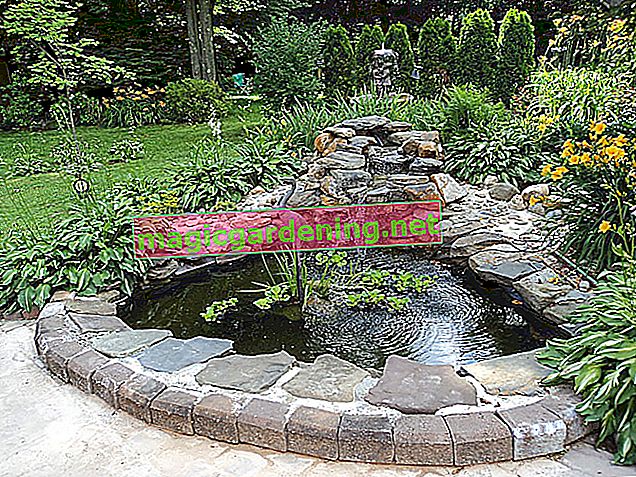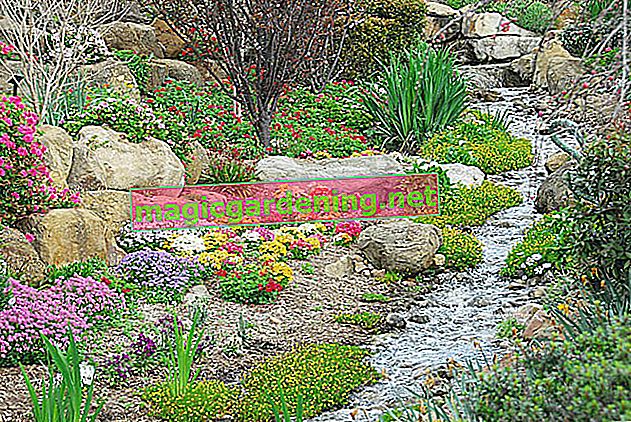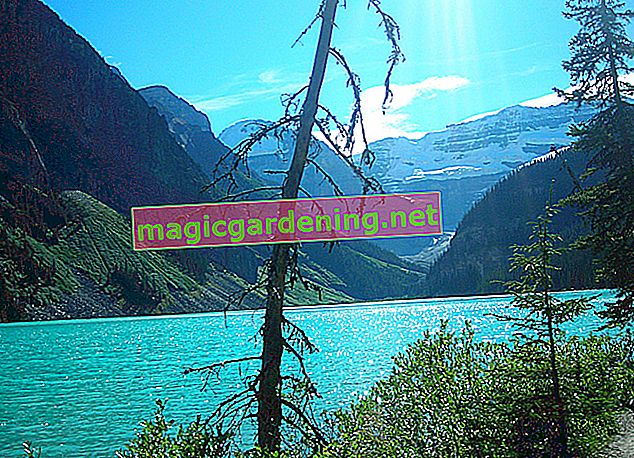
Landscaping with water
Water has an immensely calming effect on the human mind, which is why the planned stream is ideally planned near a seat. Here you can relax after your work is done, while listening to the rippling water and perhaps watching dancing dragonflies. In addition, bodies of water can fulfill very specific tasks in terms of garden design, for example by creating or subdividing different garden spaces or connecting them with one another.
also read
- Build a noble stainless steel stream yourself - that's how it works
- So you can build a source stone for the stream yourself
- Build a waterfall for a stream yourself - that's how it works
Advantages of a stream for a fish pond
Especially if fish are to be kept in the planned garden pond, a stream is an advantage to ensure high water quality. Many aquatic or bank plants clean the water flowing through by filtering out excess nutrients. In addition, the water is enriched with oxygen as it passes through, especially if you build turbulences and / or barrages or even a waterfall. Thus, the stream acts as a natural water filter, which, however, makes the artificial filter and water pump anything but superfluous. However, you should get by with significantly less chemical use, which in turn benefits the goldfish.
Creating a pond and stream - tips and advice
Creating a pond and stream together in one operation has undeniable advantages. For example, you can use the excavated earth from the pond seamlessly for the creek slope, and it also enables a better connection between the two bodies of water than with subsequent installation. You make it particularly easy for yourself if you buy matching prefabricated parts and connect them together.
Create a slope
So that the water can flow through the stream bed, a gradient of at least two percent, or better still between three and five percent, is necessary. If you do not want to create the stream on an already existing slope, you can create such an incline by excavating the pond. If the hill becomes quite steep, you should plan for some barrages. With these you can control the flow speed of the water, they also achieve an interesting look. Incidentally, the pond in its function as a water catchment basin should always be at the lowest point of the planned ensemble.
Connect the pond and the stream bed
Both bodies of water must be seamlessly and watertightly connected to each other so that water losses are kept as low as possible. You can do this by using
- Plastic trays
- concrete
- and pond liner.
You will also need the same materials to line both the pond and the stream bed in a waterproof manner. Incidentally, concrete is not waterproof on its own and must therefore be treated accordingly. This can be achieved with liquid pond liner (sprayed on or spread on) or with so-called sealing powder. Together with water, you mix a spreadable mass that is applied like paint.
Tips
When it comes to planting, less is often more. Also make sure that a capillary barrier is installed at the edges of the pond and stream. This prevents the bank vegetation from drinking the water in the truest sense of the word.








